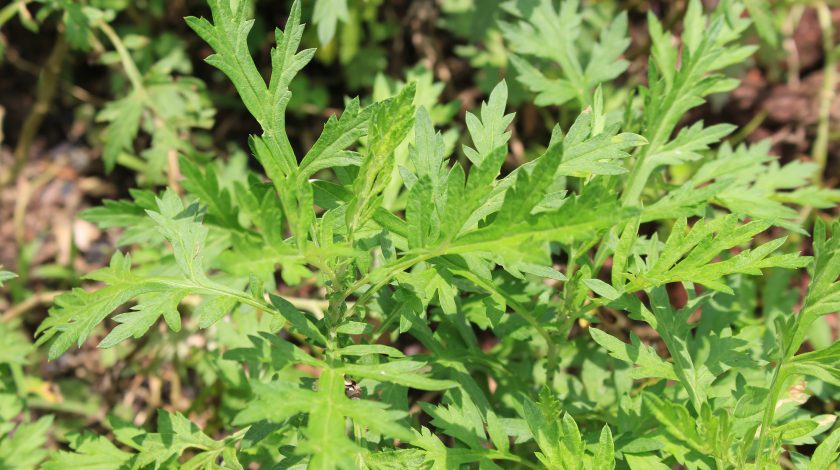The earth gives us many gifts, some of those are plants that lead to a different mind-space experience. The most known of these plants are illegal or at least very controlled.
The government can’t outlaw all the plants the Earth gave us, though, and many are as useful as their illegal friends.
One of those plants is Mugwort. It’s a road-side growing, common plant that leads to lucid dreams. Some people practice smoking mugwort and achieve full-on psychedelic trips while sleeping.
It all has to do with your body, your mind, and the quality of the plant. Get more details below.
What is Mugwort?
Mugwort is a tall shrub-looking plant, that grows in the three mild seasons. It’s related to the sunflower and grows up to five feet tall.
The leaves are green, smooth, but with tiny hairs on the underside (called tomentose). Its flowers are small, looking almost like tiny cotton buds growing close together.
They can be a red-brown or yellow with green details towards the stems.
It grows in Europe, Asia, and Africa, but is being introduced into like climates (like the US) today.
Mugwort Species
Mugwort is an umbrella term for a group of related plants, like
- Artemisia Vulgaris
- Artemisia Annua
- Chinese Mugwort
- Alpine Mugwort
- Hoary Mugwort
Among its related buddies, we find Artemisia Absinthium, the active herb in absinthe.
Since it’s related to the Absinthe plant, you know it’s got some serious mind-altering properties. This discovery isn’t new. People have been using Mugwort for thousands of years.
History
The first people to use Mugwort (that we know of) were the Chumash Indians. They were a hunter-gather and sea-going tribe, famous for whaling and early boat technology.
They used Mugwort for its psychoactive properties but kept it on hand for other uses.
The plant name Artemisia comes from the Greek Goddess of the moon, Artemis. This heavenly Greek mother watches over women and their cycles.
The Romans used mugwort for sore muscles, while the Chinese used it in moxibustion sticks.
Other Uses
Like most of the plants, the Earth provides Mugwort aids in many ways.
The one it’s most known for is psychoactive dreaming, but don’t overlook its power in treating
- Unusual Menstrual Cycles
- Transition to menopause
- Indigestion (including Colic)
- Epilepsy
- Fevers
- Asthma
- Bronchitis
- Sciatic
- Kidney problems
- Blood sugar levels
- Gout
- Nerves
- Exhaustion
- Depression
- Bruises
- Sore Feet
- Insomnia
Talk about a multi-tasker! It’s a mild diuretic (kidneys) and can even act like a gentle laxative in some cases.
Before hops were popular, women used them it to flavor beer. In fact, some people think it’s called mugwort in reference to the mugs people would pour flavored beer into.
Scientific Evidence
Like a lot of other naturally-occurring plants, there haven’t been many scientific studies. What we know about mugwort comes from trusting what our ancestors used for thousands of years.
We do know, however, that the psychoactive powers of Mugwort come from Thujone. This is a chemical compound found in juniper (makes gin) and wormwood (absinthe).
There have been scientific studies on Thujone and in absence of Mugwort specific studies, we’ll explore the results here.
What we know about Thujone come from scientists studying the fascination with absinthe. The 1920’s and early 1900’s in Paris were ripe with people getting high off the “green fairy”.
Thujone is a toxin. It processes in your brain like a mild poison and a major metabolite. The chemical binds and manipulates GABA cells and blocks chloride channels.
Other than that, the way it works is “poorly understood” in the studying scientist’s own words.
The most solid information they got out of the study was “Thujone acts at the noncompetitive blocker site of the GABAA receptor and is rapidly detoxified, thereby providing a reasonable explanation for some of the actions of absinthe other than those caused by ethanol”.
Using and Smoking Mugwort
Our ancestors used Mugwort in a few ways, depending on the what they were prioritizing.
For most effects (other than sore feet) they made a tea. Tea-steeping is the most traditional way to use natural herbs.
Most herb-tea combinations are bitter, but Mugwort boasts a rounded sweetness. It’s no sugarcane, but it’s enjoyable and reminiscent of anise.
To make it into a tea, bring water to a boil and add one to two teaspoons of grounded Mugwort. Add it to a tea diffusing spoon or french press to cover and infuse the tea.
Let sit for 10 minutes, then strain and drink.
Smoking Mugwort
Many people like to add additional herbs to psychoactive substances like marijuana. We don’t recommend that. Not only is marijuana still illegal in most places, Mugwort delivers a much more subtle effect.
You can grind up Mugwort with bulk tobacco and roll it into a cigarette or smoke it by itself. We recommend starting off small, you don’t know how much your body needs yet.
Do this an hour or so before bed and notice if you feel extra drowsy. If you’re taking Mugwort to enhance lucid dreams, make sure you’re practicing dream tracking already.
Once you’ve smoked the plant, go through your pre-sleep lucid dream process and close your eyes. When you wake up, write down what you experienced.
The herb can’t force you to have lucid dreams, but it’s a good helper along the way.
Mugwort Usage
Smoking Mugwort every night isn’t a good idea. Thujone is unsafe in large doses and the lucid dreaming or hyperactive dreams cut down on deep sleep.
At the most, use it two times a week before bed. Try to pick nights where you’re particularly aware and tuned in to your conscious mind.
It’ll give your subconscious mind a boost to show you whatever it is you’re looking for. Want to learn more about natural and legal ways to alter your consciousness (get high)?
Our blog is full of nature’s drugs. Check out this post of the Top 10 Legal High’s next!









